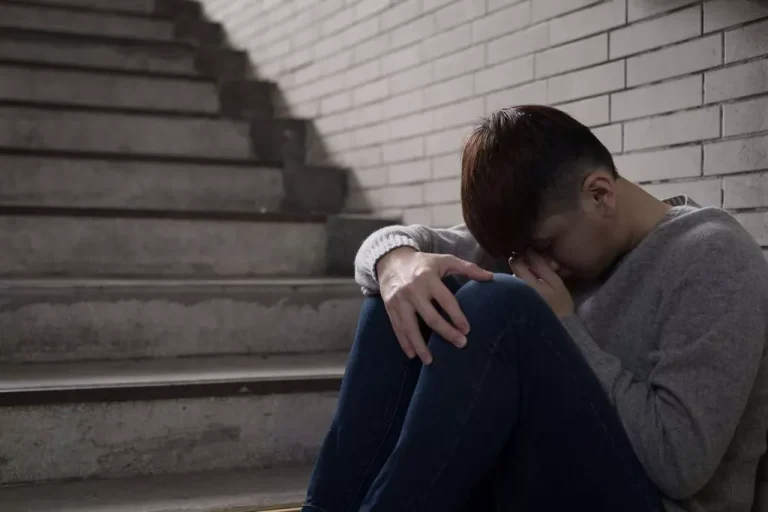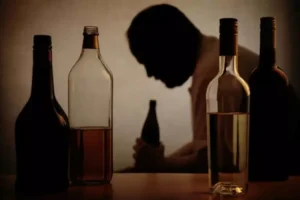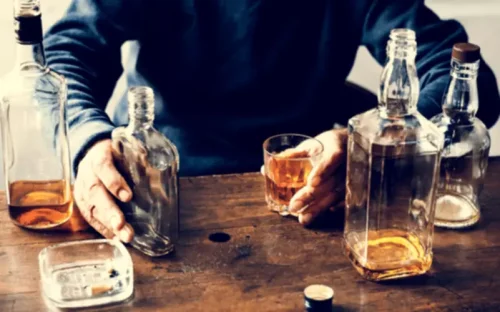
Four out of every five teenagers in the juvenile justice system at the state level were under the influence of drugs or alcohol when they are arrested. Every year, about 600,000 college students between the ages of 18 and 24 are assaulted by another student who is drunk. Around 95 percent of all campus crimes involve alcohol, consumed by the perpetrator, victim, or both. Kids who abuse alcohol are at elevated risk for physical, behavioral, academic, legal, and social harm. Watch out for the signs of underage alcohol use in your home and take the pledge to Talk It Out with your teen today. Talk It Out urges parents to start the conversation about teen alcohol use before it becomes an issue — usually before they enter high school.
Starting with a Primary Care Provider
- The Navigator offers a step-by-step process to finding a highly qualified professional treatment provider.
- More specific family-involved therapies may include multidimensional family therapy, brief strategic family therapy, and functional family therapy.
- Almost half of teens report that they are online “almost constantly” [73], indicating the potential for digital interventions to be broadly accessible to youth.
- Web-based and mobile technologies are highly accessible and appealing to adolescents [72].
- If the family needs to stage an intervention in order to get the teen to accept help, it can be even more challenging.
Family involvement usually includes educationabout treatment and how families can support the treatment process.Sometimes it involves having family sessions at the agency or evenin the home that address family environment or structure. Outpatient treatment services provide a broad range of intensity of care levels,but do not offer overnight supervision. The methods of treatmentoften focus on cognitive behavioral therapy and family therapy. Thefrequency of contact is adjusted to meet the specific needs of thepresenting individual. More intensive programs can range from 9 to 20hours per week and may include therapy on weekends.
- Digitized interventions can offer automated feedback, individually tailored messages, and can assess outcome expectations, motivation, and self-efficacy [76].
- Once a teenager abuses alcohol on a regular basis, he or she develops physical dependency and tolerance just as an adult does.
- There are many effective addiction therapy methods for teens, such as cognitive behavioral therapy, family therapy, and motivational interviewing.
- The rapid advancement of technology has introduced innovative methods of intervention in computerized brief interventions.
Alcohol Treatment Levels of Care
Over 70% of adolescents who meet diagnostic criteria for an SUD also meet criteria for one or more psychiatric disorders.4 The most common co-occurring psychiatric disorders with SUDs include conduct disorder, ADHD, depression, and stress-related disorders (eg, PTSD). The endocrine system in teenagers plays a very important role in physical development. Damaging this system means that a person can cause harm to their reproductive system, physical growth, and emotional wellbeing. If alcohol changes how the body releases estrogen or testosterone during puberty, then the child may stunt their growth; harm the development of bones, muscles, organs, and their immune system; and they may have problems with infertility later in life. There currently is limited evidence to suggest that 12-step programs are effective as standalone treatments; however, much like MI/MET, it may be an effective component of a more comprehensive approach to treatment. BMI emphasizes personal responsibility and self-efficacy of participants, offering them personalized feedback on their alcohol use, risks, expectancies, perceptions of social norms, and options for reducing problems and consequences.
How Teen Addiction Therapy Works
Due to incomplete development of a child/adolescent’s brain, and the level of experience in individuals under the age of 21, they are different from adults across numerous factors. Alcohol abuse and dependence, like most medical or psychologicaldisorders, tend to be chronic. Many adolescents will go back tousing alcohol after they complete treatment (Bukstein, 2000). One-third ofthose who relapse do so in the first month after treatment, andtwo-thirds do so in the first 6 months.

Types of Rehab for Teens

Local and state governments support existing state control systems for wholesale and off-premises retail distribution whereby a state sets the prices of alcohol and gains profit/revenue directly rather than solely from taxation. This type of dram shop liability law is enacted at the state level to hold the owner or server(s) at a bar, restaurant, or other location responsible for damages caused by an intoxicated person who was overserved alcohol at that location. A state or local government increases the tax on the sale of alcohol, thereby increasing the cost of alcohol and decreasing the affordability of drinking. Servers/sellers are rewarded and/or congratulated for checking IDs and/or refusing alcohol service.
For parents, finding out that they have a teen with alcohol use disorder can be devastating. Read about the mental health challenges facing teenagers at Healthline and Psych Central’s Youth In Focus series, which shares useful tips, resources, and support. For example,girls often initiate alcohol or drug use in dating or in conjunctionwith their first sexual experience. For a girl it is not unusual for thefirst supplier to be the boy with whom she is involved (Dakof, 2000).Another difference that may affect treatment has to do with teens’responses to anger. Girls are more likely to turn anger inward,while boys direct their anger toward others. Girls often use alcoholand drugs in part to self-medicate (Dakof, 2000), whereas boys oftenuse drugs as a means to enhance pleasure and excitement and as arite of passage.

In addition, this approach should connect adolescents andtheir families with an array of community services. Treatmentproviders, often funded by the health care system, should coordinatewith all settings in which teens in need of treatmentinteract—school, home, family, peer group, and where appropriate,the criminal justice system and the workplace. Department of Justice, local schooldistricts, local court agencies, and agencies that receive blockgrant funding from the Substance Abuse and Mental Health ServicesAdministration should support high-quality, coordinated programmingacross these settings. There remains uncertainty regarding the extent and effectiveness of pharmacotherapy in the treatment of adolescent SUDs. Future research is warranted for exploring pharmacotherapy options for adolescent SUDs, specifically as augmentative agents among those engaged in psychosocial treatments.
- There is some evidence that the mental and emotional development of teens can be permanently affected by early alcohol abuse.
- Many people struggle with controlling their drinking at some point in their lives.
- Medications can also deter drinking during times when individuals may be at greater risk for a return to drinking (e.g., divorce, death of a family member).
- The effects of drugs and alcohol on the developing brain can be severe, causing long-term effects.
- Participants study each ofthe Twelve Steps and are referred to Alcoholics Anonymous andNarcotics Anonymous meetings as part of their therapy aftertreatment to prevent relapse (Winters and Schiks, 1989).

For example, there are no alcohol treatment medications that have been approved for adolescents to use. Getting professional treatment for addiction is a vital part of recovery, and the cost should not be a barrier. Most insurance plans cover some form of addiction treatment, and many rehab centers offer payment plans and sliding scale fees. Many government-funded and non-profit programs offer free or low-cost treatment options.
Alcohol Treatment Options for Adolescents
- According to data from the National Survey on Drug Use and Health in the United States, alcohol is the most frequently used drug by teenagers.
- Talk It Out’s community education and outreach program helps parents give their kids a way to steer clear of teen alcohol use.
- Although binge drinking can have negative health consequences, not all people who binge drink are necessarily addicted to alcohol.
- The social costs of alcohol and other drug usedisorders—including costs for lost productivity, health care, criminal justice,and social welfare—are staggering.
Additionally, teens who abuse alcohol are more likely to be victimized by assault or other crimes. There is some evidence that the mental and emotional development of teens can be permanently affected by early alcohol abuse. Some research indicates that psychiatric medications like lithium (Lithobid), fluoxetine (Prozac), and sertraline (Zoloft) may be useful in decreasing alcohol use in teens who have another mental health disorder in addition to alcohol abuse. Ondansetron (Zofran) may reduce alcohol cravings in people whose problem drinking began before they were 25 years old. Facts about the societal risk factors for adolescent alcoholism include peer pressure and the portrayal of teen drinking in the media. For example, research demonstrates that the Internet and advertising, including that which occurs on social media, promote drinking behaviors in teenagers.
Alcohol treatment is most useful for adolescents who have an alcohol use disorder. Based on clinical experience, many health care providers believe that support from teenage alcoholism friends and family members is important in overcoming alcohol problems. But friends and family may feel unsure about how best to provide the support needed.
